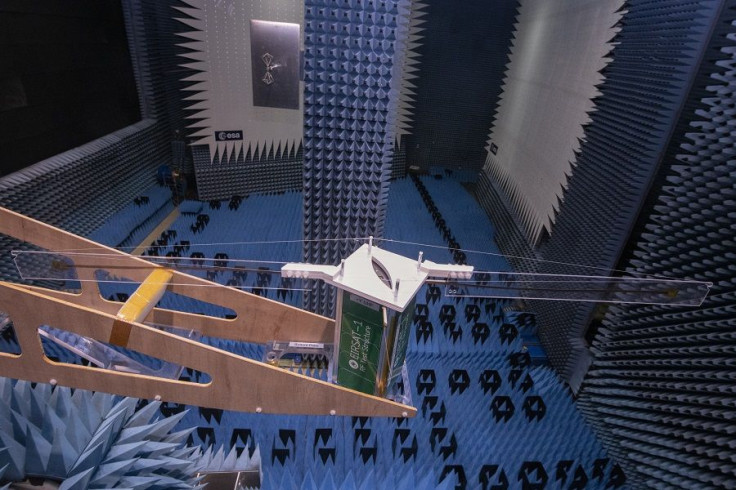Ireland's First Satellite Is Student-Built And Smaller Than A Shoebox
KEY POINTS
- Ireland's first satellite was recently tested at an ESA test chamber
- EIRSAT-1 was built by a team of students and staff from the University College Dublin
- The tests conducted at the ESA facility takes EIRSAT-1 a step closer to launching
Ireland’s first satellite is a device smaller than a shoebox and was designed by a team of university students and staff. The device’s testing at the European Space Agency’s (ESA) facilities takes it one step closer to launch.
The satellite was built by a team of students and staff from the University College Dublin.
The ESA recently shared an image of Ireland’s Educational Irish Research Satellite 1 (EIRSAT-1) being tested at the agency’s Hertz antenna test chamber. According to the ESA, the team behind a satellite would typically be present for such tests. However, because of COVID-19 restrictions, the EIRSAT-1 team only sent the antenna Deployment Module, a mock-up of the satellite body and the test preparation procedures.
"The EIRSAT-1 team are incredibly excited and grateful to have our Antenna Deployment Module tested in the Hertz chamber at ESA's ESTEC centre this week, though we are sad we aren't there too!" the EIRSAT-1 team said in a tweet.
The EIRSAT-1 team are incredibly excited and grateful to have our Antenna Deployment Module tested in the Hertz chamber at ESA's ESTEC centre this week, though we are sad we aren't there too! Thanks to @ESA__Education @ESA_Tech for the continued support. https://t.co/q0oIAA4vXd
— EIRSAT-1 (@EIRSAT1) June 10, 2020
EIRSAT-1 is barely the size of a shoebox at 22 by 10 by 10 centimeters. The team that built the satellite is participating in the agency's Fly Your Satellite program, which aims to engage, inspire and prepare university students for future careers in the space industry.
During the program, the agency supports university student teams from ESA member states in developing their own satellite by giving them access to professional test facilities, providing financial support for them to participate in workshops and even offering launch opportunities once the satellites have undergone proper verification.
After the tests recently conducted at the ESA facility and with EIRSAT-1's individual payloads already qualified for space, the next step for the satellite is for a "qualification model" to be tested later this year.
Should things go according to plan, EIRSAT-1 will carry out three experiments in Low Earth Orbit.
"We thought it was important to have some ambitious science payloads, beyond simply achieving a working satellite," project systems engineer David Murphy said. "So EIRSAT-1 carries an advanced gamma ray detector. Developed through an ESA-funded project, this GMOD 'Gamma-ray Module' detects gamma ray bursts from deep space as well as 'terrestrial gamma flashes' originating within the atmosphere, linked to lightning strikes."
Although small, such satellites do not lack in power. Only recently, the briefcase-sized CubeSat, ASTERIA, broke the record for being the smallest satellite to detect an exoplanet.
As such, there is no saying what big things Ireland's first satellite can achieve once it is launched.

© Copyright IBTimes 2025. All rights reserved.






















